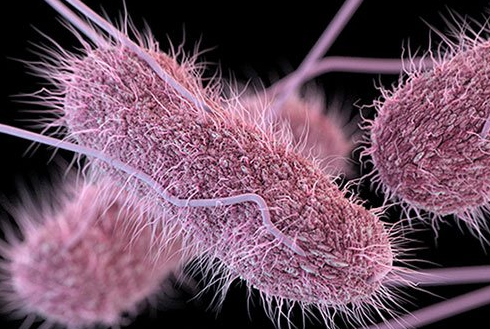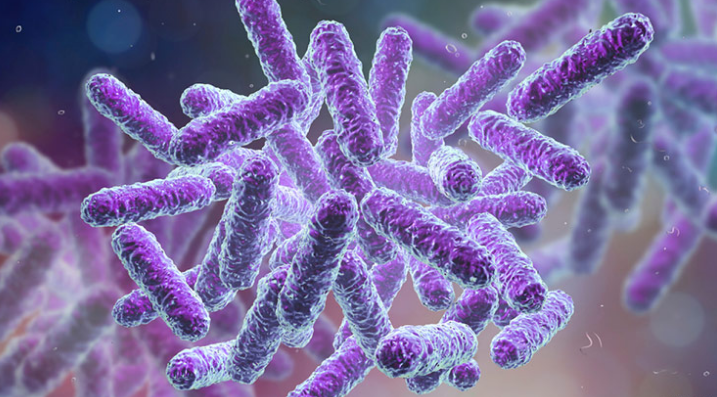While both belong to the Enterobacteriaceae family, Salmonella and Shigella harbor distinctive characteristics that set them apart in terms of transmission, symptoms, and epidemiology.
Characteristics of Salmonella
Salmonella species are predominantly motile enterobacteria found in the digestive tracts of humans and animals especially reptiles. Food and water can also be contaminated with the bacteria if they come in contact with the feces of infected people or animals.

Salmonella is a facultative bacteria. What this means is that, it can survive with or without oxygen. Obligate bacteria, on the other hand, can only survive under specific conditions.
Salmonella is a gram negative bacteria, this means that their cells contain high amount of peptidoglycan, a mesh-like substance that provide structure and strength. Salmonella is a rod-shaped bacteria or bacillus. However, unlike other strains of bacilli, salmonella does not produce spores. On MacConkey agar, salmonella colonies appear colorless and transparent, though they sometimes have dark centers. A colony is a group of bacteria that are growing together. Salmonella in humans causes Enteric fever, typhoid and gastroenteritis.
Characteristics of Shigella
There are four shigella species, that is, Shigella dysenteriae, Shigella flexneri, shigella boydii and Shigella sonnei. Shigella sonnei is the most common infectious form in North America and the developed world.

Shigella are gram-negative rods that are non-motile and non-spore –forming. Shigella is not only a human disease but it has been found in some primates. In medical laboratory, individual shigella species are often accomplished through slide agglutination using absorbed rabbit antisera. Isolation with MacCkongey’s , Hektoen Enteric Agar or salmonella-shigella agar are used as deferential media.
READ FURTHER: Staphylococcus Vs Streptococcus Bacteria
Transmission:
- Salmonella: Salmonella is primarily transmitted through the consumption of contaminated food or water. Contaminated poultry, eggs, meat, unpasteurized milk, and fruits and vegetables are common sources of Salmonella infections. Person-to-person transmission can occur through the fecal-oral route, often in settings where hygiene practices are inadequate.
- Shigella: Shigella is mainly transmitted through direct fecal-oral contact. The bacterium is highly contagious, and even a small number of Shigella organisms can cause infection. The most common modes of transmission include person-to-person spread, ingestion of contaminated food or water, and contact with contaminated surfaces or objects.
Symptoms:
- Salmonella: Salmonella infections lead to gastroenteritis, causing symptoms such as diarrhea, abdominal cramps, fever, and sometimes vomiting. In most cases, the symptoms appear within 6 to 72 hours after exposure and can last for 4 to 7 days. While most individuals recover without medical treatment, severe cases may require hospitalization, especially in young children, elderly individuals, and those with weakened immune systems.
- Shigella: Shigella infections also manifest as gastroenteritis, but they tend to cause more severe symptoms compared to Salmonella. The hallmark of Shigella infection is bloody diarrhea (dysentery), along with abdominal pain, fever, and sometimes vomiting. The incubation period is usually shorter, ranging from 1 to 7 days after exposure. Like Salmonella, most cases resolve on their own, but severe cases may necessitate medical intervention.
Epidemiology:
- Salmonella: Salmonella is a widespread pathogen, responsible for a significant portion of foodborne illnesses globally. It affects millions of people each year, leading to numerous outbreaks associated with contaminated food products. Certain strains of Salmonella, such as Salmonella typhi, can cause typhoid fever, a more severe systemic illness.
- Shigella: Shigella infections are more commonly associated with human-to-human transmission, particularly in crowded or unsanitary environments. The bacterium thrives in areas with poor sanitation and is often responsible for outbreaks in childcare facilities, schools, and refugee camps. Unlike Salmonella, Shigella is less likely to cause large-scale foodborne outbreaks.
Antibiotic Resistance:
- Salmonella: Over time, some strains of Salmonella have developed antibiotic resistance, posing a challenge in the treatment of severe infections. Multidrug-resistant Salmonella infections have become a significant public health concern.
- Shigella: In recent years, strains of Shigella have emerged that are resistant to multiple antibiotics, making treatment more complicated.
Salmonella Vs. Shigella In Tabular Form
| BASIS OF COMPARISON | SALMONELLA | SHIGELLA |
| Shape | Salmonella is a rod shaped microbe. | Shigella is a slender shaped microbe. |
| Motility | Salmonella is motile with peritrichous flagella. | Shigella is non-motile in nature. |
| Differential Media (Hektoen Agar) | Salmonella colonies in Hektoen Agar appear black in color. | Shigella colonies in Hektoen Agar will appear green in color. |
| Human Organs Highly Likely To be Affected | Salmonella affects both large and small intestines. | Shigella mainly affects the large intestine. |
| Toxic Production | Salmonella produces enterotoxin. | Shigella produces heat labile toxin referred to as Shiga toxin. |
| Causes | Salmonella mainly causes Salmonellosis. | Shigella mainly causes Shigellosis. |
| H2H Production | Salmonella produces H2S. | Shigella doesn’t produce H2S. |
| Reservoir of the Microbe | Human and animals are the main reservoir of Salmonella. | Human and primates are the only reservoir of Shigella. |
| Major Pathogen | Salmonella typhi. | Shigella dysenteriae. |
| Common Mode of Transmission | Raw food, contaminated food and water | Person to person contact |
| Dosage | Salmonella requires large dosage. | Shigella requires small dosage |
What Are Some Of The Similarities Between Salmonella and Shigella?
- Both Shigella and Salmonella are facultative anaerobes and bob-spore forming organisms.
- Both Salmonella and Shigella are gram negative.